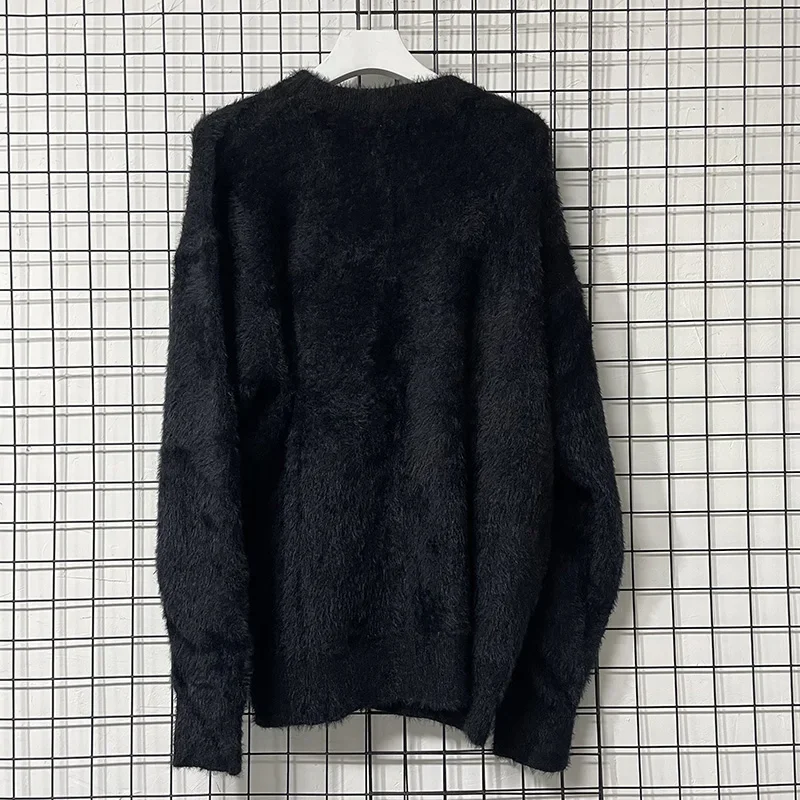Introduction: Understanding Responsible Cashmere
Responsible cashmere production encompasses three essential pillars: ethical animal treatment, environmental sustainability, and social responsibility. In an industry known for its luxury appeal, these principles aren’t just idealistic concepts—they’re becoming necessary practices as consumers grow more conscious of their purchasing decisions. The cashmere industry stands at a critical crossroads, balancing the demand for this exquisite fiber against significant ecological and ethical concerns.
Conventional cashmere production often comes at a steep cost. With global production exceeding 20,000 tons annually, traditional methods have led to overgrazing, desertification, and animal welfare issues across major production regions. The contrast between conventional and responsible cashmere is striking—not just in ethical terms, but in quality. Responsibly harvested fibers from well-cared-for goats typically exhibit better length, strength, and softness than those obtained through stressful or harmful methods.
As luxury consumers increasingly seek transparency, the industry must adapt. Understanding styling tips for cashmere cardigans becomes even more meaningful when you recognize how production methods influence the quality and ethics behind your garment. This shift toward eco-conscious cashmere choices represents a fundamental reimagining of luxury—one where excellence is measured not just by softness and warmth, but by the integrity of the entire production process.
I. Why Traditional Cashmere Production Needs Reform
Traditional cashmere production faces multiple critical challenges that demand urgent reform:
Environmental degradation stands as the most visible consequence. Nearly 70% of Mongolia’s grasslands—home to the world’s highest concentration of cashmere goats—show signs of desertification. The delicate ecosystem simply cannot sustain the estimated 27 million goats currently grazing these lands, a number that has quadrupled since the 1990s.
Animal welfare concerns persist throughout conventional production. Many goats endure painful shearing rather than gentle combing, often in frigid conditions that cause unnecessary stress and suffering. When harvesting occurs outside the natural molting season, goats can be left vulnerable to harsh weather without their protective coat.
Social sustainability issues compound these problems. Herding communities face economic precarity due to fluctuating cashmere prices and middleman exploitation. Without fair compensation, herders often increase their herd size to boost income, perpetuating the cycle of overgrazing and environmental degradation.
Perhaps most telling is how these irresponsible practices actually diminish cashmere quality. Stressed goats produce shorter, coarser fibers, while overgrazed lands yield inadequate nutrition, further reducing fiber quality.
Understanding the relationship between cashmere sourcing regions and quality ethics helps consumers make more informed decisions. This knowledge directly influences which cashmere sweaters truly deserve their luxury status—and premium price.
II. Ethical Animal Welfare Standards
Humane Harvesting Techniques
Responsible cashmere begins with gentle hand-combing rather than shearing. This process works with the goats’ natural biology, collecting fiber during spring molt when they naturally shed their winter undercoat. Proper combing causes minimal stress while yielding the highest quality down fibers—those measuring under 16 microns in diameter.
Seasonal Timing and Natural Cycles
Ethical producers strictly adhere to the natural molting cycle, typically harvesting once annually in late spring (April-May). This timing ensures goats aren’t stripped of essential protection during cold months—a practice that can lead to illness or death in harsh mountain climates.
Comprehensive Animal Care
Responsible standards include providing:
– Appropriate shelter protecting goats from extreme temperatures (especially below 14°F/-10°C)
– Nutritionally balanced feeding with adequate winter supplementation
– Regular veterinary care including parasite management and disease prevention
– Access to clean water sources year-round
The Five Freedoms Framework
Ethical cashmere production embraces the internationally recognized Five Freedoms of animal welfare:
1. Freedom from hunger and thirst
2. Freedom from discomfort
3. Freedom from pain, injury, or disease
4. Freedom to express normal behaviors
5. Freedom from fear and distress
When these standards are maintained, the difference becomes tangible—goats produce longer, stronger fibers with better crimp and loft. These superior fibers translate directly into the exceptional quality found in cashmere wool cardigans that perform better and last longer.
III. Sustainable Land Management Practices
Responsible cashmere production depends on thoughtful land stewardship through these proven practices:
Implement rotational grazing systems. Rather than continuous grazing, herds move through different pasture sections in planned sequences. This allows vegetation recovery periods of 30-45 days between grazing episodes, preventing overuse and soil compaction.
Maintain appropriate herd sizes based on scientific carrying capacity assessments. Generally, this means no more than 1-3 goats per hectare depending on the specific ecosystem’s productivity.
Create buffer zones around water sources extending at least 100 feet from shores to prevent contamination and erosion while maintaining vegetation that stabilizes banks.
Restore degraded grasslands through reseeding with native species and temporary grazing exclusion. In Mongolia’s South Gobi region, these techniques have successfully restored over 2,000 hectares of previously degraded pastureland.
Preserve biodiversity by protecting key indicator species. Healthy pastures typically maintain 15-20 different plant species, including deep-rooted perennial grasses that indicate good soil health.
Successful sustainable grazing initiatives in Mongolia have demonstrated that responsible management can reverse desertification within 3-5 years. These programs have documented a 30-40% increase in vegetation coverage and significant improvements in soil organic matter.
For consumers seeking truly sustainable options, understanding these principles provides context for evaluating organic cashmere clothing and ethical options that genuinely support ecosystem health.
IV. Water Conservation and Pollution Prevention
Responsible cashmere production places water stewardship at its core through innovative conservation measures and pollution prevention:
Water-saving techniques throughout production can reduce usage by up to 90% compared to conventional methods. Advanced facilities implement closed-loop systems that recycle up to 95% of process water through multi-stage filtration, significantly reducing fresh water demands.
Low-impact dyeing technologies represent another crucial improvement. Waterless dyeing processes using CO2 instead of water eliminate wastewater entirely, while natural plant-based dyes derived from sources like walnut husks, madder root, and indigo provide beautiful colors without harmful chemicals.
Protecting natural water sources in herding regions remains equally important. Responsible producers establish protected zones around water bodies and implement erosion control measures to prevent siltation from degrading water quality.
The differences in water impact are striking: processing one kilogram of cashmere conventionally requires approximately 125-150 gallons of water, while responsible methods can reduce this to 15-30 gallons through recycling and efficiency measures.
These water conservation practices directly enhance the sustainability profile of garments like cashmere turtlenecks without compromising quality or appearance—demonstrating how responsibility and luxury can successfully coexist.

V. Fair Labor and Community Support
Ethical cashmere production extends beyond environmental considerations to embrace robust social responsibility through fair labor practices and community support.
Fair wage standards form the foundation, with responsible brands ensuring all workers—from herders to processors to artisans—receive compensation that covers living costs plus discretionary income. This typically means paying 20-30% above local market rates to create genuine economic stability.
Community investment takes various forms, including educational opportunities for herders’ children, healthcare access programs, and infrastructure development. In Mongolia’s Gobi region, several responsible cashmere initiatives have established community centers that provide veterinary training, weather forecasting services, and financial literacy programs.
Women’s empowerment stands as a particular focus in many cashmere-producing communities. Training programs help women develop specialized skills in fiber sorting, spinning, and quality assessment—roles that typically command higher wages and provide year-round employment beyond seasonal herding.
The preservation of traditional knowledge represents another vital component. Many responsible producers document and honor indigenous herding techniques that have sustained these landscapes for generations, integrating this wisdom with modern sustainable practices.
These social responsibility efforts create ripple effects throughout communities while ensuring the people behind women’s cashmere cardigans receive fair treatment and opportunities for advancement—completing the full circle of ethical luxury production.
VI. Innovative Production Methods
The most forward-thinking cashmere producers are blending ancient wisdom with modern innovation to create production systems that honor tradition while embracing sustainability.
Traditional nomadic knowledge provides invaluable insights about seasonal migration patterns, weather prediction, and land reading skills that have sustained herding communities for centuries. When combined with scientific monitoring of vegetation recovery rates and soil health indicators, these integrated approaches yield superior results.
Organic cashmere production follows strict standards prohibiting synthetic pesticides, hormones, and GMO feed while requiring documented animal welfare practices. While certification costs present challenges for smaller producers, cooperatives are making organic methods more accessible.
Energy efficiency improvements throughout processing facilities make significant environmental contributions. Modern mills employ heat recovery systems that capture and reuse up to 80% of energy from processing operations. Solar installations increasingly power rural processing centers in Mongolia and China, reducing carbon footprints throughout the supply chain.
Innovative fiber sorting technologies using spectroscopy and artificial intelligence now allow for more precise fiber diameter measurement without chemical treatments. This enables better utilization of the raw material while ensuring consumers receive consistently excellent quality in their cashmere cardigans with versatile styling options.
VII. Recycled and Regenerated Cashmere
Recycled cashmere represents one of the industry’s most promising sustainability innovations, offering significant environmental benefits alongside quality materials.
The recycling process generally follows these steps:
1. Collection of pre-consumer waste (manufacturing scraps) or post-consumer items (used garments)
2. Sorting by color to minimize re-dyeing requirements
3. Mechanical shredding to break down materials into fiber form
4. Cleaning and carding to align fibers
5. Blending with virgin cashmere or other natural fibers (typically 5-20%) to enhance performance
The environmental advantages are substantial. Recycled cashmere reduces water consumption by approximately 80%, eliminates the need for additional land use, and significantly decreases carbon emissions compared to virgin cashmere production.
Quality considerations do matter—recycled fibers are typically shorter than virgin ones, which can affect durability. However, advanced processing techniques and strategic blending have dramatically improved recycled cashmere quality. Many consumers now find properly produced recycled cashmere garments nearly indistinguishable from virgin ones in terms of softness and performance.
For consumers seeking maximum sustainability, recycled cashmere provides an excellent option that can be styled in 15 stylish ways to wear cashmere cardigans while minimizing environmental impact.

VIII. How to Verify Responsible Cashmere: Certifications and Standards
Navigating cashmere certifications helps consumers identify truly responsible products amid marketing claims. Key standards include:
| Certification | Focus Areas | Verification Process |
|---|---|---|
| Sustainable Fibre Alliance (SFA) | Land management, animal welfare, herder livelihoods | Annual third-party audits, field assessments |
| Good Cashmere Standard (GCS) | Animal welfare, environmental protection, social criteria | Independent verification, farm-level inspections |
| Global Organic Textile Standard (GOTS) | Organic fiber content, environmental processing, labor conditions | On-site inspection of entire supply chain annually |
| OEKO-TEX Standard 100 | Chemical safety, human-ecological requirements | Laboratory testing for harmful substances |
| Fair Trade Certification | Fair wages, community development, environmental practices | Independent audits, premium payment verification |
While these certifications provide valuable guidance, each has limitations in scope or geographic coverage. The most transparent brands go beyond certification by implementing traceability systems—from QR codes linking to specific herding communities to blockchain technology tracking each production stage.
When shopping for oversized cashmere sweaters or other cashmere items, these certifications provide meaningful assurance that your purchase meets genuine responsibility standards rather than simply making empty claims.
Cashmere Wrap Sweaters, Women's Cashmere Pullovers
$75.89 Select options This product has multiple variants. The options may be chosen on the product pageCashmere Cable Knit Sweaters, Women's Cashmere Pullovers
Price range: $111.82 through $112.93 Select options This product has multiple variants. The options may be chosen on the product pageCropped Cashmere Sweaters, Women's Cashmere Pullovers
$155.77 Select options This product has multiple variants. The options may be chosen on the product pageOversized Cashmere Sweaters, Plus Size Cashmere Sweaters, Women's V-Neck Cashmere Sweaters
$136.87 Select options This product has multiple variants. The options may be chosen on the product page- Price range: $108.11 through $130.03 Select options This product has multiple variants. The options may be chosen on the product page
Striped Cashmere Sweaters, Women's Cashmere Pullovers
$139.68 Select options This product has multiple variants. The options may be chosen on the product page
IX. Is Responsible Cashmere Worth the Premium?
Quality Differences That Justify Cost
Responsibly produced cashmere typically commands a 20-30% price premium—but delivers substantial quality benefits justifying this investment. Cashmere from properly cared-for goats with adequate nutrition produces longer fibers (averaging 36-42mm versus 28-32mm in conventional cashmere), resulting in significantly less pilling and greater durability.
The True Cost Calculation
When calculating cost-per-wear over a garment’s lifetime, responsible cashmere often proves more economical:
– A $300 responsible cashmere sweater worn 30 times annually for 10+ years = approximately $1 per wear
– A $200 conventional cashmere sweater lasting 3-4 years with the same wear frequency = approximately $1.67-2.22 per wear
Beyond Physical Value
Responsible cashmere delivers additional value through peace of mind, knowing your purchase supports environmental regeneration, animal welfare, and community development. Many consumers report greater satisfaction and emotional connection to garments with transparent, ethical origins.
The hidden costs of conventional cashmere—environmental degradation, animal suffering, exploitation of workers—never appear on the price tag but are paid elsewhere. Understanding these factors helps explain why quality responsible cashmere represents a worthwhile investment, as further explored in our analysis of whether cashmere cardigans are worth the investment.
X. How to Care for Cashmere to Maximize Longevity
Proper care extends the lifespan of responsible cashmere, maximizing both your investment and its sustainability benefits:
Washing: Hand wash using lukewarm water (never hot) with a mild detergent specifically formulated for wool or cashmere. Gently swirl—don’t wring or twist—and limit washing to 3-4 times per season.
Drying: Press (don’t wring) excess water out using a clean towel, then lay flat to dry on a fresh towel away from direct heat or sunlight. Reshape while damp.
Storage: After ensuring the garment is completely dry, fold (don’t hang) and store in breathable cotton bags or acid-free tissue paper. Add cedar blocks or lavender sachets as natural moth deterrents rather than chemical mothballs.
Pilling management: Remove pills gently using a cashmere comb or battery-operated fabric shaver on the lowest setting. Some pilling is natural with first few wears but should diminish over time with quality cashmere.
Rest between wears: Allow 24-48 hours between wearings to let fibers recover their natural resilience and release odors naturally.
These care techniques work harmoniously with the inherent quality of responsible cashmere, ensuring your garment remains beautiful for years while minimizing the environmental footprint of replacement purchases. For more detailed guidance on maintaining your investment pieces, explore our guide to preserving luxury cashmere with proper storage tips.

XI. Can Conventional Cashmere Ever Be Truly Sustainable?
The transformation of conventional cashmere toward true sustainability presents both promising developments and significant challenges.
Industry-wide sustainability remains difficult due to fragmented supply chains involving thousands of small-scale herders across remote regions. However, encouraging signs of transition are emerging. Several major producers have implemented improved practices, with approximately 20-30% of global production now incorporating some responsible elements—though fully responsible cashmere remains a smaller percentage.
Economic realities create significant hurdles. Many herders lack the financial cushion to reduce herd sizes or transition to more sustainable practices without immediate income alternatives. Successful transitions typically require long-term support systems and price guarantees during the adaptation period.
Rather than viewing sustainability as binary, understanding it as a spectrum allows recognition of incremental improvements. The most realistic path forward likely involves gradual transformation through targeted interventions, cooperative models that provide economic security, and consumer education driving demand for responsible products.
Consumer choices play a crucial role in this evolution. By selecting men’s cashmere pullovers and other items from brands demonstrating genuine commitment to improvement, shoppers directly influence production practices across the industry.
XII. How Consumers Can Support Responsible Cashmere
Individual consumer choices collectively drive industry transformation. Here’s how to make your purchasing decisions count:
Research brand transparency: Look for detailed information about sourcing regions, animal welfare standards, and environmental practices. Vague claims without specifics often signal “greenwashing” rather than genuine responsibility.
Verify claims through certifications: The standards discussed earlier provide important verification, though no single certification covers all aspects of responsible production.
Recognize price realities: Truly responsible cashmere typically costs more to produce. Suspiciously low prices (under $100 for 100% cashmere sweaters) almost certainly indicate corners being cut somewhere in production.
Choose quality over quantity: Investing in fewer, better pieces creates more impact than purchasing multiple lower-quality items that require frequent replacement.
Ask questions: Inquire about specific practices regarding land management, animal welfare, and worker treatment. Brands with genuine commitments welcome these questions and provide substantive answers.
Care properly for your purchases: Extending garment lifespan through proper care directly reduces environmental impact.
By making thoughtful choices and understanding the ultimate guide to layering cashmere cardigans and other pieces, consumers become powerful advocates for a more responsible cashmere industry—one that honors the exceptional qualities of this luxury fiber while ensuring its production benefits animals, ecosystems, and communities alike.







